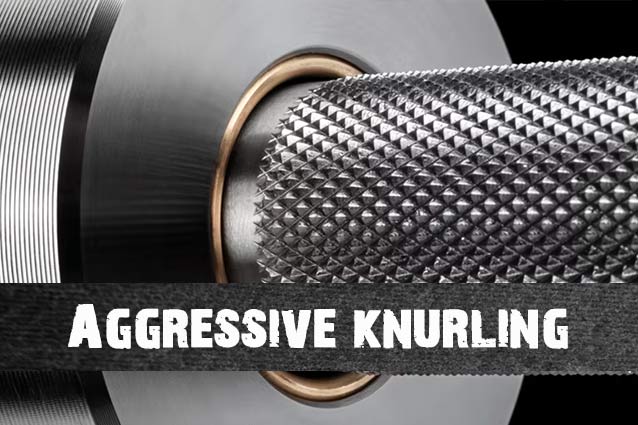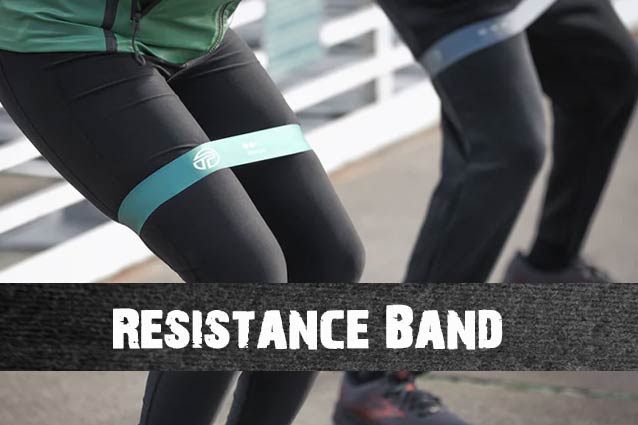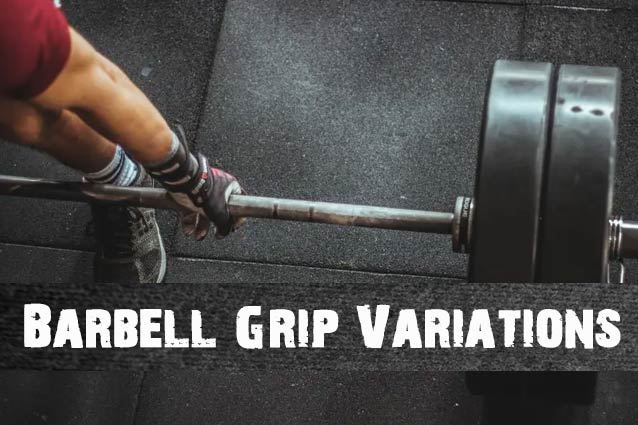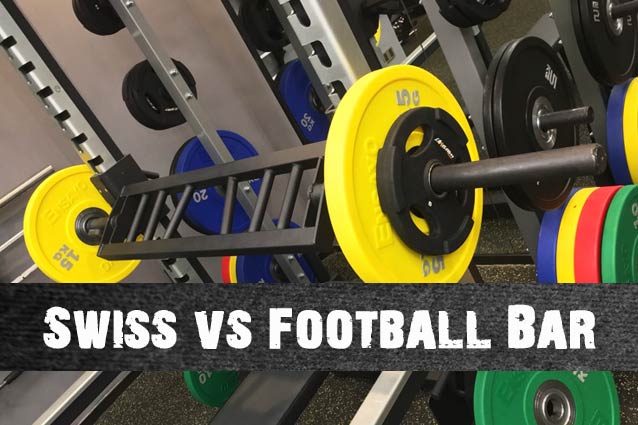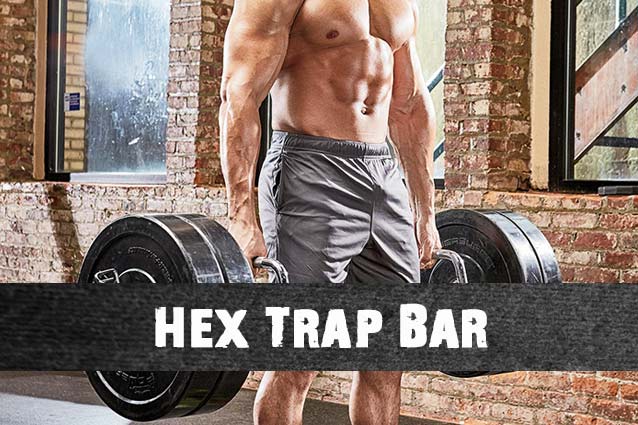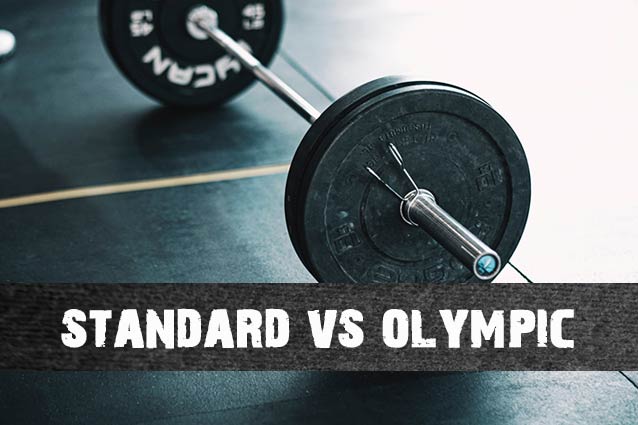If you’re an experienced weightlifter, you know that grip is often the limiting factor in any lift.
That’s why having good quality barbells with properly knurled handles for your Olympic lifting or Powerlifting squats, bench presses and deadlifts is key to a successful workout – especially when it comes to repping out heavy sets of squats and deadlifts.
So what do we mean by “aggressive” knurling? We’re talking about barbells with deeper grooves cut into them in order to provide more traction and give lifters better control over their lifts. But does this type of intense gripping aid help performance or hurt it?
If you’ve ever watched someone debate about what type of knurling is best suited for their lifting goals, then we may just have something in common!
Let’s dive into the facts around aggressive knurling to determine if it should be added to your fitness arsenal.
Knurling Patterns and Aggressiveness
Knurling patterns can be designed to be more or less aggressive depending on the purpose and application of the part being knurled. Generally, deeper and more closely spaced knurling patterns will be more aggressive.
Some knurling patterns that are often considered more aggressive include diamond knurling, straight knurling, and cross knurling. These patterns have sharp edges and points that can dig into the surface of the material, providing a more secure grip.
However, the aggressiveness of a knurled pattern also depends on the material being knurled. For example, a pattern that is aggressive on a soft material like plastic may not be aggressive enough on a harder material like metal.
Want to learn more? Check out this video!
How do the depth and sharpness of knurling affect its aggressiveness?
The depth and sharpness of a knurling design can have a large impact on how aggressive it is. The deeper and sharper the knurling, the more aggressive it will feel to the user.
A deeper and sharper design will offer greater grip, but will also be more significantly uncomfortable to handle over sustained periods of time.
In contrast, less aggressive knurling designs feature a shallow depth with lower points and angles which offer enough grip to hold securely but with reduced discomfort.
Understanding the tradeoff between aggressiveness and comfort is an important part of choosing the correct knurling for the job. Choosing a design that maintains a balance between those two extremes often proves to be the best-integrated solution for many applications.
How does the spacing between barbell knurls affect their aggressiveness?
The spacing between barbell knurls, also known as the pitch, is another factor that affects the aggressiveness of the knurling.
Closer spacing between the knurls will result in a more aggressive grip, as there are more contact points between the knurls and the lifter’s hands.
However, too much closeness between the knurls can result in discomfort or even pain for some lifters, especially during heavy lifts where the bar may dig into the skin.
On the other hand, wider spacing between the knurls may not provide as much grip, but it can be more comfortable for lifters who prefer a smoother grip.
Ultimately, the spacing between the knurls is a matter of personal preference, and lifters should choose a barbell with a pitch that feels comfortable and effective for their training goals.
You may also like:
- The Safer Choice – A Guide To The Hex Trap Bar
- Swiss Bar Vs Football Bar
Is Mountain knurling the most aggressive knurling?
Mountain knurling is a type of barbell texturing favored by strongman athletes.
We know this because they usually opt for knurling with a deeper and more aggressive grip than the standard type – and Mountain knurling fits this bill in spades.
It’s famously sharp, often described as teeth-like due to its unique shape compared to other types of barbell knurling.
The strength community has taken notice – plenty of powerlifting and CrossFit gyms now provide implements featuring Mountain knurls.
Such knurling will certainly hold your grip no matter how sweaty or intense things get. However, this may also cause abrasion and callousing.
Overall, the Mountain knurling remains the go-to choice for those seeking maximum gripping power during their workouts.
The relationship between the weight and the aggressive of knurling
The depth, sharpness, and spacing of the knurls all play a role in how aggressive the grip feels.
However, there is another crucial factor to consider: the weight you plan to lift.
When you are lifting a relatively lightweight, the aggressiveness of the knurling may not matter as much since your grip is not being pushed to its limits. However, as you start lifting heavier weights, the aggressiveness of the knurling can significantly affect your grip and overall performance.
In some cases, barbells with more aggressive knurling may provide more grip and control over the bar, allowing you to lift heavier weights with confidence. On the other hand, if the knurling is too invasive, it can cause discomfort or even pain, which can negatively impact your lifting ability.
Ultimately, finding the right balance between the weight you want to lift and the aggressiveness of the knurling is essential for optimal performance.
It’s important to experiment with different types of knurling to find what works best for your lifting goals and preferences.
By taking the time to find the right barbell, you can improve your grip, minimize discomfort, and achieve your lifting goals.
Could the aggressive knurling cause harm?
Many fitness enthusiasts are curious about how much grip a coarse knurl can provide and whether the most aggressive knurling can cause harm or not.
Indeed, athletes and powerlifters who require extra grip may find coarse knurling beneficial, but it could also be potentially damaging to certain lifters due to its abrasive nature.
Those with delicate hands may need to look into alternative ways of improving their grip without risking tears in the skin or extreme soreness.
To prevent harm, you should always test a bar before making it your primary barbell — and consider investing in high-quality weightlifting gloves as well to provide an extra layer of protection.
Aggressive knurling barbells
Are you on the hunt for the ultimate aggressive knurling barbells?
Look no further! We’ve done the hard work for you and conducted extensive market research to bring you a list of the top models.
However, be warned that some of these bad boys are razor-sharp and can easily cut into your hands.
So, be sure to handle them with care.
- Eleiko competition bar
- Rogue Pyrros bar
- Ohio power bar
- Werksan competition bar
In this video, we’re talking all about aggressive knurling barbells that won’t break the bank:
Final thoughts
In conclusion, aggressive barbell knurling can be a great way to improve grip strength and durability if used correctly. As with most things in life, moderation is key.
It’s best not to overdo it and make sure to try it out first before committing to using aggressive knurling for your weightlifting routine.
For powerlifters and bodybuilders, a more aggressive knurling with sharper grooves might provide them with greater grip stability when lifting heavyweights.
On the other hand, CrossFit athletes may benefit from less aggressive knurling since they perform multiple types of movements, and having an uncomfortable grip may disrupt their technique and performance.
So don’t forget to take the time to do your research, find what works for you, and get ready to gain strength and hit those personal goals!

